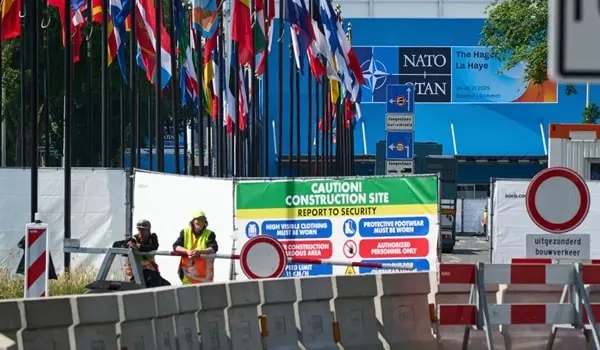Setting the Scene
The NATO summit in The Hague (June 24–25) is overshadowed by intense security measures: ‘Operation Orange Shield’ mobilized roughly 27,000 Dutch police and 10,000 defense personnel, with F‑35 jets and naval vessels ensuring tight airspace control. The summit draws global attention due to its strategic timing amid Middle Eastern tensions and internal Alliance divisions.
Summit Agenda
Defense Spending & Military Basing: Allies agree to a combined 5% of GDP on defense — 3.5% direct military spending plus 1.5% for related areas like cyber, infrastructure, and stockpiling. Flexible implementation, with deadlines ranging from 2032 to 2035, and a review scheduled for 2029.
Several allies (e.g., Spain) will opt out of the 5% commitment due to fiscal limits. The U.S. drive stems from Trump’s insistence, though he hints America might be exempt given historical contributions.
Plans to rapidly deploy 300,000 troops within 30 days in case of a major attack. Strategic investments in air and missile defense, with Europe encouraged to scale up capabilities by approximately 400%.
A shift toward modern warfare tools — drones, long‑range missiles, cyber — especially among frontline NATO countries.
Ukraine’s Diminished Presence: Zelenskyy has been invited, but his role is expected to be limited — likely a ‘guest at a dinner’, with Ukraine only receiving a brief mention in official statements. NATO will continue coordination with Ukraine via the NATO–Ukraine Council (held during the foreign and defense ministers’ dinner).
Transatlantic Tensions
U.S. Political Shift: Trump’s de‑emphasis on Ukraine signals a pivot toward negotiating with Russia and redirecting attention to the Indo-Pacific and Israel‑Iran situation. Aid and intelligence flows to Ukraine have slowed.
European Pushback: Many European allies criticize sidelining Ukraine and aim to preserve its visibility in discussions. Nonetheless, they will rally behind other priorities like defense spending.
Broader Context
Strategic Reprioritization: NATO is reshuffling focus — from the Russian land threat and Ukraine’s defense to naval and air capabilities oriented toward global flashpoints in the Middle East and Indo-Pacific.
Key Dates: The summit coincides with the 80th anniversary of the Korean War and meetings of central bankers across the ECB, BOE, and Fed — highlighting a loaded political-economic agenda.
Implications Going Forward
Alliance Cohesion Tested: If the U.S. strategy continues to de-emphasize Ukraine, European allies may intensify calls for autonomy in defense. There’s a precedent for accelerating EU defense cooperation and procurement projects.
Transcontinental Significance: For NATO, this summit could mark a strategic redirection — expanding its scope while risking alienation of Eastern European members who view Russia as the foremost threat.

